The Demise of Seobang Market
Written and photographed by Isaiah Winters
When the topic of traditional markets in Gwangju comes up, Yangdong, Daein, Songjeong, and a few others readily come to mind. These markets have doggedly withstood the onslaught of business-savvy supermarkets and countless convenience stores, thanks in part to the authenticity and open-air ambiance they provide, which can neither be purchased nor recreated in stores or online.
Nevertheless, a few other traditional markets, despite their tenacity and inimitable character, haven’t been so lucky. One example is Seobang Market (서방시장) in Punghyang-dong, which hardly registers today despite once being the third largest market in Gwangju. Established in 1966, its heyday is long over, with only the most visible shops along its outer edges still in business. The once thriving market center is now semi-ruinous at best, with nearly all the inner storefronts shuttered and trash heaps festering in the interstices between them.
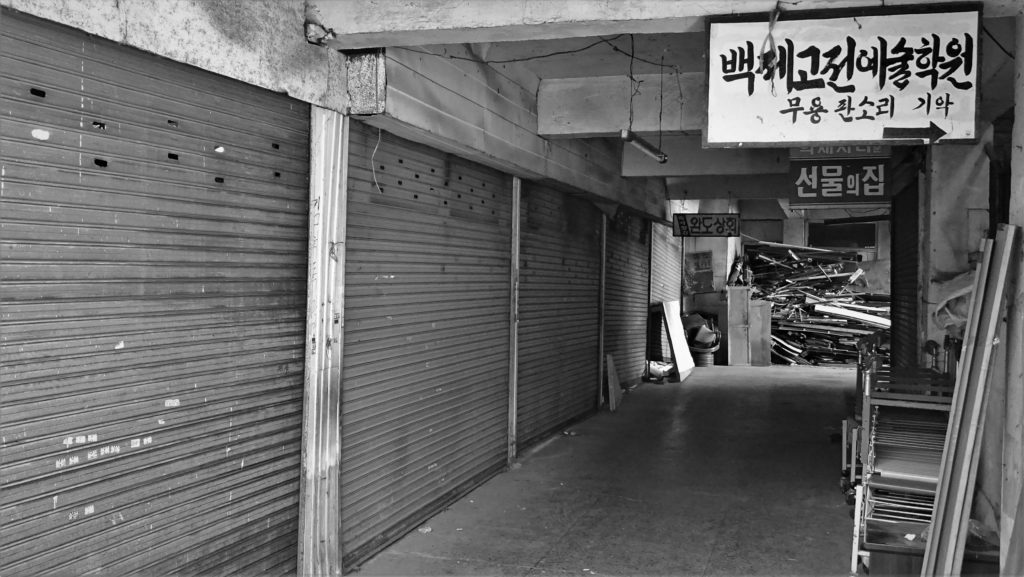
On a recent visit with a friend, we got to photographing some of the market’s poignant remains: quaint hand-painted signs from nearly half a century ago, the cold bleakness of the central stairwell, and a glass storefront showcasing a bevy of abandoned sewing machines. It was near the latter where we ran into an older gentleman with thick glasses and a strong chin who took a liking to us once we told him we were interested in shooting old things. Soon, he became our impromptu tour guide around the market center.
In no time, our chaperone led us straight to a nearby blanket shop to see the oldest thing he knew of in the entire market – an antique Singer sewing machine bearing an ornate golden sphinx decal. Though probably a Japanese knockoff, based on what I could find online, it’s still easily in range of 100 years old. I’ll never forget the look of bewilderment on the seamstresses’ faces when he opened the shop door and ushered me in sans introduction. Was our escort the son, brother, or husband of one of the seamstresses, or just an open-minded weirdo who took too many liberties? I’ll never know.
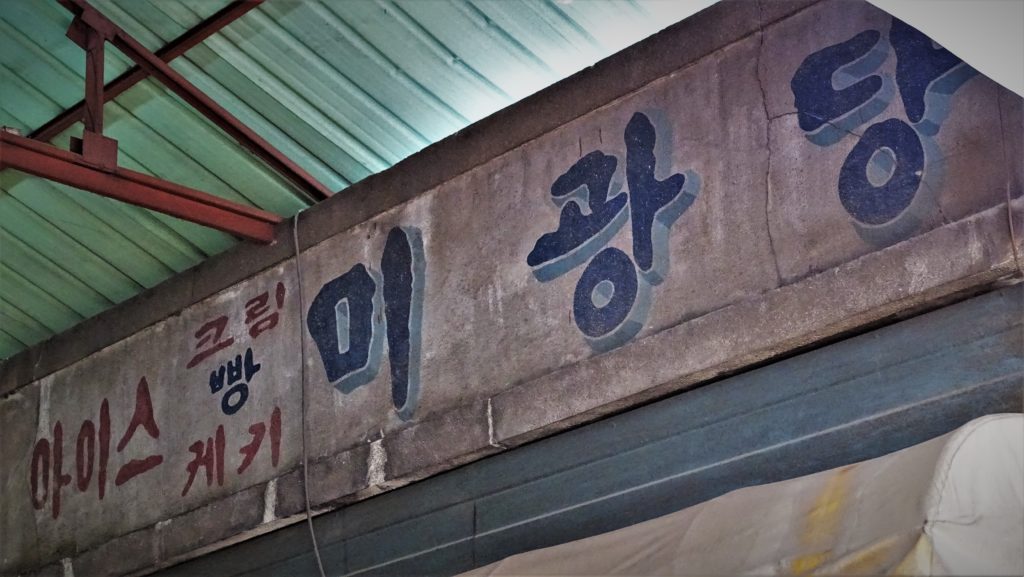
After parting ways with our guide, we soon picked up another while looking at some of the hand-painted storefront signs. An older lady in a cloche hat saw us admiring the writing along the side of her shop and came out to chat with us about it. Beneath the dust and antique grime, the sign said 아이스 크림 빵 케키 (lit. ice cream, ice-cake, pastries), which stood out because it used the older, more Japanese-influenced 케키 (keki) spelling rather than the 케이크 (keikeu) spelling of “cake” more commonly seen today. Proudly, she explained that the sign was quite old and that “keki” was once a popular snack, similar to an ice pop, sold decades ago.
Not everyone was so delighted to show us around, however. Near the inner stairwell is a shop maintained by an elderly woman who spotted us shooting photos and didn’t much appreciate our presence. At one point, she left her shop and hid behind the wall nearest us to get a sense of what we were up to. When she finally peeked her head around the corner, I said hello and explained what we were doing – photographing old stuff – but she wasn’t having any of it. Out of respect, we left, though I did make my surreptitious return a few weeks later to reshoot the stairwell without her knowing.
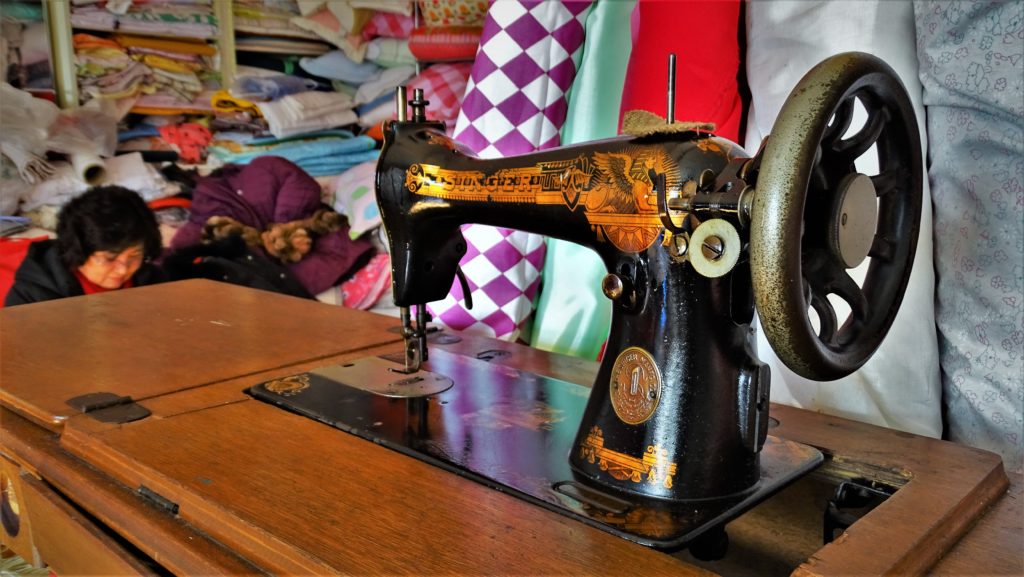
Apparently, kicking out interlopers is an old tradition at Seobang Market. The market used to attract lots of farmers from Damyang, Sunchang, Gokseong, and elsewhere who would come down to Gwangju to sell their goods. However, these and other street vendors were blamed for hindering the business of established merchants at the market, so in 1968, the administrative authorities forced these street vendors to move further north away from the market. They would eventually set up shop at Malbau Intersection, giving birth to Malbau Market (말바우시장) in the process.[1][2] The irony is that today, Malbau Market is large and lively with updated facilities, while Seobang Market is languishing on death’s door.
Facing decline in the mid-1990s, bold new plans were approved to create an underground shopping mall beneath the road in front of Seobang Market, which would have been much like the underground shopping mall seen downtown today. Unfortunately, after 135 meters of the tunnel had already been dug, the Asian Financial Crisis hit Korea in mid-1997 and funding for the 13-billion-won project dried up. Efforts to resume construction years later never panned out, so now the concrete tunnel sits unused.[3]
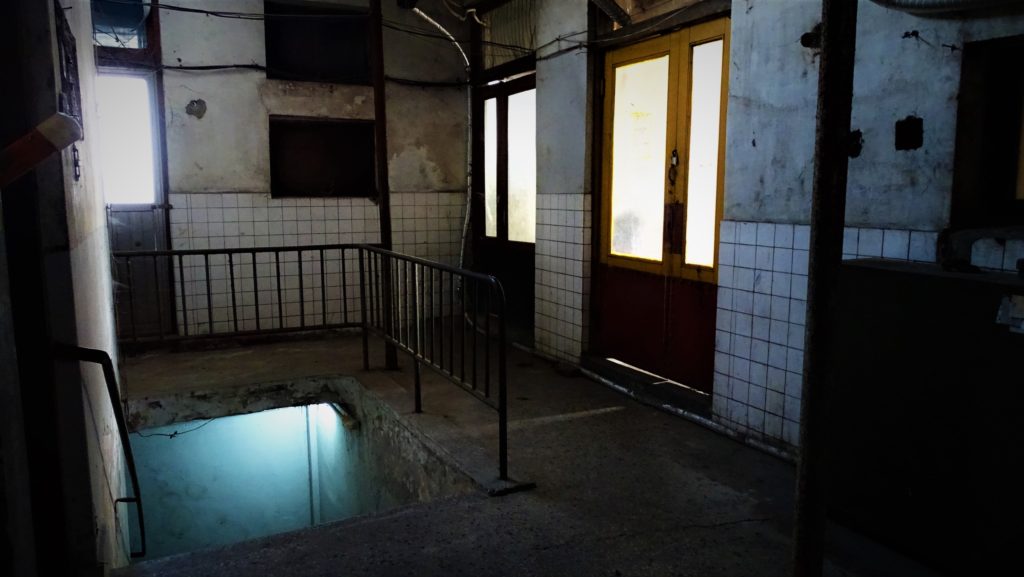
Without proper maintenance, corrosion, leaks, and the potential collapse of the eight-lane boulevard above are of real concern. In order to better sustain the unused space, a few ideas have been floated in recent years, including turning it into an urban farm where crops can be grown using LED lights, but that plan never quite panned out either. The latest idea is to connect the underground mall to one of the city’s new subway lines currently under construction, which could save the city up to 3.6 billion won[4] and bring more customers to the market above.
With better accessibility, an unlikely rebirth of sorts could still occur over the next few years. It’s not too hard to imagine a few intrepid hipsters with a passion for studied minimalism taking advantage of the low rents and setting up small boutique shops around the potentially vibey market center. But there’s no guarantee that even a revival of this sort would salvage the market’s soul; to purists, gentrification is little better than an upscale death. Still, it’ll be interesting to see what happens to Seobang Market if its forgotten underground shopping mall is linked to the expanding subway system. I wish the locals all the best.
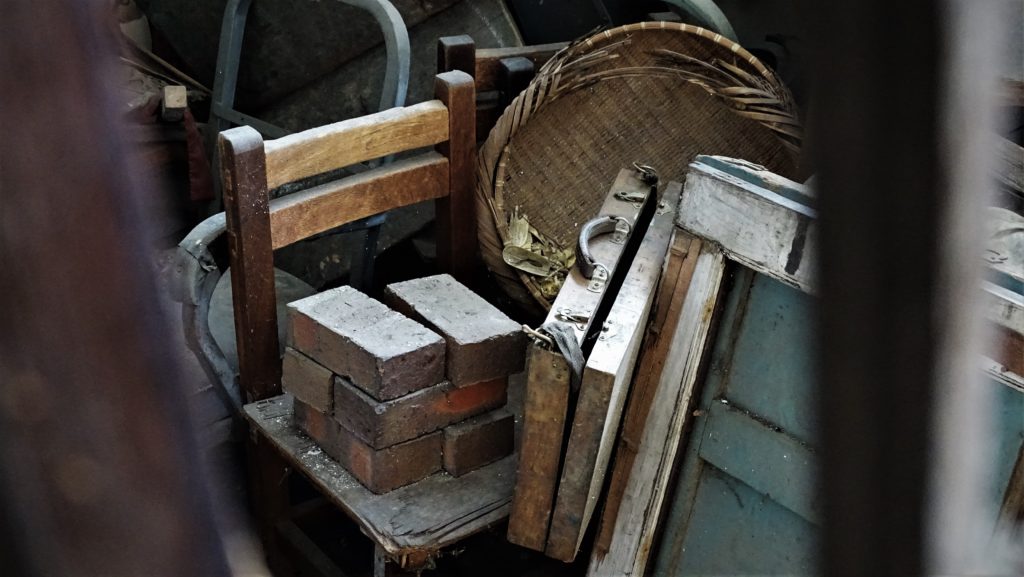
market center.
References
[1] Seon, M. (2017, March 14). 광주 말바우시장, 장날 2·4·7·9일 활기
‘여전.’ Retrieved from the CMB Gwangju Broadcasting website:
http://www.cmbkj.co.kr/ab-991-4746&OTSKIN=news_m_
skin.php
[2] Kim, H. (2018, January 30). 말바우 시장이라는 또 다른
생활문화센터_엽서찍는 2479_from 말바우시장 [Web log].
Retrieved from http://gomgomap.blogspot.com/2018/01/
blog-post.html
[3] Park, J. (2007, January 24). 착공 10년·공사중단 7년 . . .
광주서방지하상가 방치 안된다. Retrieved from the Namdo
News website: http://www.namdonews.com/news/articleView.
html?idxno=191232#09U0
[4] Kim, D., & Park, E. (2018. April 12). LED식물공장, 맞춤형
기능성 의료 특화 작물로 활로 모색. Retrieved from the Siminsori
website: http://www.siminsori.com/news/articleView.
html?idxno=202378
The Author
Originally from Southern California, Isaiah first came to Gwangju in 2010. He enjoys visiting, photographing, and researching parts of Gwangju and Jeollanam-do that won’t last much longer. When he’s not doing this, he’s usually considering whether to get his lungs checked for exposure to mold and asbestos. He wonders whether he may be another part of Gwangju that won’t last very long.







